Occupational therapy for adults with problems in activities of daily living after stroke
- PMID: 28721691
- PMCID: PMC6483548
- DOI: 10.1002/14651858.CD003585.pub3
Occupational therapy for adults with problems in activities of daily living after stroke
Abstract
Background: A stroke occurs when the blood supply to part of the brain is cut off. Activities of daily living (ADL) are daily home-based activities that people carry out to maintain health and well-being. ADLs include the ability to: eat and drink unassisted, move, go to the toilet, carry out personal hygiene tasks, dress unassisted, and groom. Stroke causes impairment-related functional limitations that may result in difficulties participating in ADLs independent of supervision, direction, or physical assistance.For adults with stroke, the goal of occupational therapy is to improve their ability to carry out activities of daily living. Strategies used by occupational therapists include assessment, treatment, adaptive techniques, assistive technology, and environmental adaptations. This is an update of the Cochrane review first published in 2006.
Objectives: To assess the effects of occupational therapy interventions on the functional ability of adults with stroke in the domain of activities of daily living, compared with no intervention or standard care/practice.
Search methods: For this update, we searched the Cochrane Stroke Group Trials Register (last searched 30 January 2017), the Cochrane Controlled Trials Register (The Cochrane Library, January 2017), MEDLINE (1946 to 5 January 2017), Embase (1974 to 5 January 2017), CINAHL (1937 to January 2017), PsycINFO (1806 to 2 November 2016), AMED (1985 to 1 November 2016), and Web of Science (1900 to 6 January 2017). We also searched grey literature and clinical trials registers.
Selection criteria: We identified randomised controlled trials of an occupational therapy intervention (compared with no intervention or standard care/practice) where people with stroke practiced activities of daily living, or where performance in activities of daily living was the focus of the occupational therapy intervention.
Data collection and analysis: Two review authors independently selected trials, assessed risk of bias, and extracted data for prespecified outcomes. The primary outcomes were the proportion of participants who had deteriorated or were dependent in personal activities of daily living and performance in activities of daily living at the end of follow-up.
Main results: We included nine studies with 994 participants in this update. Occupational therapy targeted towards activities of daily living after stroke increased performance scores (standardised mean difference (SMD) 0.17, 95% confidence interval (CI) 0.03 to 0.31, P = 0.02; 7 studies; 749 participants; low-quality evidence) and reduced the risk of poor outcome (death, deterioration or dependency in personal activities of daily living) (odds ratio (OR) 0.71, 95% CI 0.52 to 0.96; P = 0.03; 5 studies; 771 participants; low-quality evidence). We also found that those who received occupational therapy were more independent in extended activities of daily living (OR 0.22 (95% CI 0.07 to 0.37); P = 0.005; 5 studies; 665 participants; low-quality evidence). Occupational therapy did not influence mortality (OR: 1.02 (95% CI 0.65 to 1.61); P = 0.93; 8 studies; 950 participants), or reduce the combined odds of death and institutionalisation (OR 0.89 (95% CI 0.60 to 1.32); P = 0.55; 4 studies; 671 participants), or death and dependency (OR 0.89 (95% CI 0.64 to 1.23); P = 0.47; 4 trials; 659 participants). Occupational therapy did not improve mood or distress scores (OR 0.08 (95% CI -0.09 to 0.26); P = 0.35; 4 studies; 519 participants; low-quality evidence). There were insufficient data to determine the effects of occupational therapy on health-related quality of life. We found no studies of consenting carers prior to study participation and therefore there were no carer-related outcomes in our review. There were insufficient data to determine participants' and carers' satisfaction with services.Using GRADE, the quality of evidence was low. The major limitation was the number of studies at unclear risk of selection bias and an inevitable high risk of performance and detection bias, as both participants and occupational therapists could not be blinded to the intervention. In addition, there was a sparseness of data for our outcomes of interest and we downgraded the quality of our evidence for these reasons.
Authors' conclusions: We found low-quality evidence that occupational therapy targeted towards activities of daily living after stroke can improve performance in activities of daily living and reduce the risk of deterioration in these abilities. Because the included studies had methodological flaws, this research does not provide a reliable indication of the likely effect of occupational therapy for adults with stroke.
Conflict of interest statement
Lynn Legg: none known Sharon Lewis: none known Oliver J Schofield‐Robinson: none known Avril Drummond (AD): AD was a co‐author of one of the included studies. AD was not involved in trial selection in this update. Peter Langhorne (PL): PL was an co‐author of one of the included studies. PL was not involved in trial selection in this update.
Figures
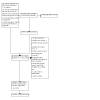
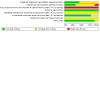
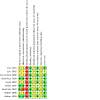

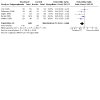

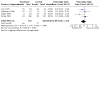

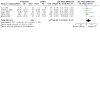

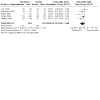

Update of
-
Occupational therapy for patients with problems in activities of daily living after stroke.Cochrane Database Syst Rev. 2006 Oct 18;2006(4):CD003585. doi: 10.1002/14651858.CD003585.pub2. Cochrane Database Syst Rev. 2006. Update in: Cochrane Database Syst Rev. 2017 Jul 19;7:CD003585. doi: 10.1002/14651858.CD003585.pub3. PMID: 17054178 Free PMC article. Updated.
References
References to studies included in this review
Chui 2004 {published data only}
-
- Chiu WY, Man DWK. The effect of training older adults with stroke to use home-based assistive devices. Occupational Therapy Journal of Research 2004;24(3):113-20.
Corr 1995 {published and unpublished data}
-
- Corr S, Bayer A. Occupational therapy for stroke patients after hospital discharge. Clinical Rehabilitation 1995;9:291-6.
Drummond 1996 {published and unpublished data}
-
- Drummond AER, Walker MF. Generalisation of the effects of leisure rehabilitation for stroke patients. British Journal of Occupational Therapy 1996;59(7):330-4.
Gilbertson 2000 {published and unpublished data}
Logan 1997 {published and unpublished data}
-
- Logan P, Ahern J, Gladman JRF, Lincoln NB. A randomized controlled trial of enhanced Social Service occupational therapy for stroke patients. Clinical Rehabilitation 1996;10:107-13. - PubMed
Parker 2001 {published and unpublished data}
-
- Parker CJ, Gladman JRF, Drummond AER, Dewey ME, Lincoln NB, Barer D, et al. A multicentre randomized controlled trial of leisure therapy and conventional occupational therapy after stroke. Clinical Rehabilitation 2001;15:42-52. - PubMed
Radomski 2007 {published data only}
-
- Radomski MV. Impact of post-discharge habit training of self care skills on independence, caregiver burden, and development of automaticity for survivors of recent stroke [thesis]. 5-B edition. Vol. 68. US: ProQuest Information & Learning, 2007.
Walker 1996 {published and unpublished data}
-
- Walker MF, Drummond AER. Evaluation of dressing practice for stroke patients after discharge from hospital: a crossover design study. Clinical Rehabilitation 1996;10:23-31.
Walker 1999 {published and unpublished data}
-
- Walker MF, Gladman JRF, Lincoln NB, Siemonsa P, Whitely T. Occupational therapy for stroke patients not admitted to hospital. Lancet 1999;354:278-80. - PubMed
References to studies excluded from this review
Abizanda 2011 {published data only}
-
- Abizanda P, Leon M, Dominguez-Martin L, Lozano-Berrio V, Romero L, Luengo C, et al. Effects of a short-term occupational therapy intervention in an acute geriatric unit. A randomized clinical trial. Maturitas 2011;69(3):273-8. [PMID: ] - PubMed
Andrea 2003 {published data only}
-
- Andrea S, Kotzabassaki S, Bellou M, Vardaki Z. Evaluation of the effectiveness of a self-care educational program on activities of daily living, performed by hemiplegic patients. ICUS and Nursing Web Journal 2003;16:1-7.
Bai 2012 {published data only}
-
- Bai YL, Hu YS, Wu Y, Zhu YL, He Q, Jiang CY, et al. A prospective, randomized, single-blinded trial on the effect of early rehabilitation on daily activities and motor function of patients with hemorrhagic stroke. Journal of Clinical Neuroscience 2012;19(10):1376-9. [PMID: ] - PubMed
Chaiyawat 2012 {published data only}
-
- Chaiyawat P, Kulkantrakorn K. Effectiveness of home rehabilitation program for ischemic stroke upon disability and quality of life: a randomized controlled trial. Clinical Neurology & Neurosurgery 2012;114(7):866-70. [PMID: ] - PubMed
-
- Chaiyawat P, Kulkantrakorn K. Long-term effectiveness home rehabilitation program for ischemic stroke. International Journal of Stroke 2010;5:286.
-
- Chaiyawat P, Kulkantrakorn K. Quality of life, depression and dementia in randomized controlled trial of long-term home rehabilitation for ischemic stroke. International Journal of Stroke 2010;5:285-6.
-
- Chaiyawat P, Kulkantrakorn K. Randomized controlled trial of home rehabilitation for patients with ischemic stroke: impact upon disability and elderly depression. Psychogeriatrics 2012;12(3):193-9. [PMID: ] - PubMed
Cross 2014 {published data only}
-
- Cross DMC, Piassi P, Sime MM, Sanches NS, Vasconcelos FEO. Effects of intervention group in the activities of daily life for people after a stroke. Revista Brasileira de Neurologia e Psiquiatria 2014;18(3):189-201. [609361396]
Desrosiers 2007 {published data only}
-
- Desrosiers J, Noreau L, Rochette A, Carbonneau H, Fontaine L, Viscogliosi C, et al. A home leisure education program may reduce depression after a stroke. Stroke 2007;38(2):473-4. - PubMed
-
- Desrosiers J, Noreau L, Rochette A, Carbonneau H, Fontaine L, Viscogliosi C, et al. Effect of a home leisure education program after stroke: a randomized controlled trial. Archives of Physical Medicine & Rehabilitation 2007;88(9):1095-100. [PMID: ] - PubMed
Egan 2007 {published data only}
-
- Egan M, Kessler D, Laporte L, Metcalfe V, Carter M. A pilot randomized controlled trial of community-based occupational therapy in late stroke rehabilitation. Topics in Stroke Rehabilitation 2007;14(5):37-45. [17901014] - PubMed
Guidetti 2011 {published data only}
-
- Guidetti S, Ranner M, Tham K, Andersson M, Ytterberg C, Koch L. A "client-centred activities of daily living" intervention for persons with stroke: one-year follow-up of a randomized controlled trial. Journal of Rehabilitation Medicine 2015;47(7):605-11. [PMID: ] - PubMed
-
- Guidetti S, Ytterberg C. A randomised controlled trial of a client-centred self-care intervention after stroke: a longitudinal pilot study. Disability & Rehabilitation 2011;33(6):494-503. [PMID: ] - PubMed
-
- NCT01417585. A trial of a client-centered intervention aiming to improve functioning in daily life after stroke [A randomized controlled trial of a client-centered intervention aiming to improve functioning in daily life after stroke]. clinicaltrials.gov/ct2/show/NCT01417585 (first received 15 August 2015).
-
- Ranner M, Bertilsson AS, Guidetti S, Johansson U, Eriksson G, Ytterberg C, et al. A 3 month follow-up of a client-centred activity of daily living intervention after stroke: a multicenter randomized controlled trial. Stroke 2013;44:WP315.
Jing 2006 {published data only}
-
- Jing ZW, Han QY, Wang Z, Zhang JW, Zhang ZQ, Han CH, et al. Effect of early occupational therapy on the activities of daily life in stroke patients. Chinese Journal of Clinical Rehabilitation 2006;10(4):54-6. [43614681]
Kessler 2014 {published data only}
-
- Kessler DE, Egan MY, Dubouloz CJ, Graham FP, McEwen SE. Occupational performance coaching for stroke survivors: a pilot randomized controlled trial protocol. Canadian Journal of Occupational Therapy 2014;81(5):279-88. [PMID: ] - PubMed
-
- Kessler DE, Egan MY, Dubouloz C-J, McEwen SE, Graham F. Occupational performance coaching for stroke survivors: pilot RCT results. International Journal of Stroke 2015;10 Suppl 4:85.
-
- NCT01800461. Occupational performance coaching for stroke survivors [Occupational performance coaching for stroke survivors: a novel patient-centered intervention to improve participation in personally valued activities]. clinicaltrials.gov/ct2/show/NCT01800461 (first received 22 February 2013).
Landi 2006 {published data only}
-
- Landi F, Cesari M, Onder G, Tafani A, Zamboni V, Cocchi A. Effects of an occupational therapy program on functional outcomes in older stroke patients. Gerontology 2006;52(2):85-91. [PMID: ] - PubMed
Li 2008 {published data only}
-
- Li Y, Gu X, Yao Y, Wu H, Li H, Wang W. The effect of occupational therapy to upper limbs function of movement and activities of daily living on patients with hemiplegia. Journal of Rehabilitation Medicine 2008;(Suppl 46):65. [CN-00747708]
Park 2011 {published data only}
-
- Park HJ, Oh DW, Kim SY, Choi JD. Effectiveness of community-based ambulation training for walking function of post-stroke hemiparesis: a randomized controlled pilot trial. Clinical Rehabilitation 2011;25(5):451-9. [PMID: ] - PubMed
Rasmussen 2016 {published data only}
-
- Rasmussen RS, Ostergaard A, Kjaer P, Skerris A, Skou C, Christoffersen J, et al. Stroke rehabilitation at home before and after discharge reduced disability and improved quality of life: a randomised controlled trial. Clinical Rehabilitation 2016;30(3):225-36. [PMID: ] - PubMed
-
- Rasmussen RS, Overgaard K, Ostergaard A, Kjaer P, Skerris A, Skou C, et al. Post-stroke rehabilitation at home reduced disability and improved quality of life: a randomized controlled trial. Cerebrovascular Diseases 2013;35:94-5.
Rodgers 2015 {published data only}
-
- ISRCTN4520337. A trial to Evaluate an eXTended RehAbilitation service for Stroke patients (EXTRAS). www.isrctn.com/ISRCTN45203373 (first received 8 August 2012).
Sackley 2004 {published and unpublished data}
-
- Sackley C, Wade DT, Mant D. Is the intervention of an occupational therapist effective in increasing independence for residents with stroke living in a care home? Cerebrovascular Diseases 2003;16 (Suppl 4):112.
-
- Sackley CM, Copley Atkinson J, Walker MF. Occupational therapy in nursing and residential care settings: a description of a randomised controlled trial intervention. British Journal of Occupational Therapy 2004;67(3):104-9.
Sahebalzamani 2009 {published data only}
-
- Sahebalzamani M, Aliloo L, Shakibi A. The efficacy of self-care education on rehabilitation of stroke patients. Saudi Medical Journal 2009;30(4):550-4. [PMID: ] - PubMed
Skidmore 2012 {published data only}
-
- NCT01934621. Adapting daily activity performance through strategy training [Closing the gap: early intervention for cognitive disability after stroke]. clinicaltrials.gov/ct2/show/NCT01934621 (first received 29 August 2013).
-
- Skidmore ER, Dawson DR, Whyte EM, Holm MB, Becker JT. Closing the gap: early intervention for cognitive disability after stroke. Archives of Physical Medicine and Rehabilitation 2012;93(10):E11. [70880170]
Skidmore 2016 {published data only}
-
- NCT02755805. CO-OPerative training for stroke rehabilitation [CO-OPerative training for stroke rehabilitation: a phase II trial examining meta-cognitive strategy training in acute stroke rehabilitation]. clinicaltrials.gov/ct2/show/NCT02755805 (first received 25 April 2016).
Stalhandske 1997 {published data only}
-
- Stalhandske M, Tuvemo-Johnson S, Terent A, Fugl-Meyer A. After stroke; a home rehabilitation project 'lara leva efter stroke'. In: 9th Scandinavian Meeting on Cerebrovascular Diseases; 1997 August 16-19; Uppsala (SWEDEN). 1997.
Sun 2001 {published data only}
-
- Sun YH, Wang L, Wang ZS. Effects of the home-based occupational therapy on motor function of limbs in patients with hemiplegia. Hong Kong Medical Journal 2001;7(4):25 P9.
Tuncay 2006 {published data only}
-
- Tuncay FO, Mollaoglu M. The effect of a self-care education program on cerebrovascular disease patients' activities of daily living. Neurology Psychiatry and Brain Research 2006;13(2):83-8. [44343113]
Walker 2012 {published data only}
-
- Fletcher-Smith JC, Drummond A, Walker MF. A survey to explore the acceptability of the treatment approaches used in the DRESS study. International Journal of Stroke 2011;6 Suppl 2:2.
-
- Walker M, Drummond A, Edmans J, Fletcher-Smith J, Garvey K, Horne J, et al. Dressing rehabilitation after stroke study. In: 4th UK Stroke Forum; 2009 Dec 1-3. 2009:17.
-
- Walker M, Drumond A, Edmans J, Fletcher-Smith J, Garvey K, Ince P, et al. A randomised controlled trial of dressing rehabilitation for stroke patients with cognitive impairments: the DRESS study. In: 3rd UK Stroke Forum Conference; 2008 Dec 2-4. 2008:67-8.
-
- Walker M, Sunderland A, Edmans J, Drummond A, Logan P, Ince P. Dressing Rehabilitation Evaluation Stroke Study (DRESS): a randomised controlled trial of a neuropsychologically informed dressing therapy. In: UK Stroke Forum Conference; 2007 Dec 4-6. 2007:72.
-
- Walker M. DRESS Dressing Rehabilitation Evaluation Stroke Study UK. public.ukcrn.org.uk/Search/StudyDetail.aspx?StudyID=3918) (accessed 31 January 2017).
Whitehead 2016 {published data only}
Yu 2009 {published data only}
-
- Yu J, Hu Y, Wu Y, Chen W, Cui X, Lu W. An analysis about the effects of standardized community-based rehabilitation (CBR) therapy on ADL for patients after stroke in China [abstract]. Journal of Rehabilitation Medicine 2008;40(46):110.
-
- Yu J, Hu Y, Wu Y, Chen W, Cui X, Lu W. An analysis of the effects of community-based rehabilitation therapy on activity of daily living performance of the Chinese stroke patients: a single blind, randomized, controlled, multicenter trial. Journal of Physical Medicine and Rehabilitation 2008;30(4):260-4.
-
- Yu J, Hu Y, Wu Y, Chen W, Zhu Y, Cui X, et al. The effects of community-based rehabilitation on stroke patients in China: a single-blind, randomized controlled multicentre trial. Clinical Rehabilitation 2009;23(5):408-17. [PMID: ] - PubMed
Zhang 2008a {published data only}
-
- Zhang E, Han G, Zhang L. Effect of comprehensive rehabilitation therapy on locomotor function and the ability of daily living (ADL) in hemiplegic patients after stroke. Journal of Rehabilitation Medicine 2008;40(46):102. [CN-00747793]
Zhu 2007 {published data only}
-
- Zhu XJ, Wang T, Chen Q, Wang X, Hou H, Wang HX. The effects of standardized rehabilitation treatment on the outcome of activities of daily living in patients with hemiplegia after stroke. Chinese Journal of Cerebrovascular Diseases 2007;4(6):254-9. [47054565]
References to studies awaiting assessment
Bai 2008 {published data only}
-
- Bai Y, Hu Y, Chen W, Wang X, Cheng A, Jiang C, et al. Effects of three stage rehabilitation therapy on neurological deficit scores and ADL in ischemic stroke patients. Journal of Rehabilitation Medicine 2008;40(46):109. [CN-00747801]
Chan 2012 {published data only}
-
- Chan G. Stroke rehabilitation: benefits of carryover programme in subacute care. Neurorehabilitation and Neural Repair 2012;26(6):727. [70838136]
Zhang 2008b {published data only}
-
- Zhang J, Wu S, Huang Y, Long Y, Chen T, Feng L, et al. The effects of standardized three stages rehabilitation program in promoting active function in stroke patients with hemiplegia. Journal of Rehabilitation Medicine 2008;40(46):111.
References to ongoing studies
NCT02802956 {published data only}
-
- NCT02802956. A preliminary feasibility efficacy of participation in daily life promotion program. clinicaltrials.gov/ct2/show/NCT02802956 (first received 3 June 2016).
NCT02925637 {published data only}
-
- NCT02925637. Effectiveness of FACoT for individuals post stroke [Effectiveness of a novel meta-cognitive-functional intervention (FACoT) for individuals post mild-moderate stroke]. clinicaltrials.gov/ct2/show/NCT02925637 (first received 3 August 2016).
Additional references
Age UK 2017
-
- Age UK. Factsheet 42 Disability equipment and home adaptations. www.ageuk.org.uk (accessed March 2017).
ATiA
-
- Assistive Technology Industry Association. What is AT? https://www.atia.org/at-resources/what-is-at/ (last accessed 14 March 2017).
Covidence [Computer program]
-
- Covidence. Melbourne: Veritas Health Innovation Ltd, (accessed 23 October 2015).
Egger 1997
Endnote [Computer program]
-
- Endnote X5. New York: Thomson Reuters, 2011.
Fletcher‐Smith 2013
Gillen 2016a
-
- Gillen G, editor. Stroke Rehabilitation: A Function-based Approach. 4th edition. Missouri: Elsevier, 2016.
Gillen 2016b
-
- Mathiowetz V. Chapter 3: Task-orientated approach to stroke rehabilitation. In: Gillen G, editors(s). Stroke Rehabilitation: A Function-based Approach. 4th edition. Missouri: Elsevier, 2016.
Gillen 2016c
-
- Mathiowetz V. Chapter 4: Activity-based intervention in stroke rehabilitation. In: Gillen G, editors(s). Stroke Rehabilitation: A Function-based Approach. 4th edition. Missouri: Elsevier, 2016.
Gillen 2016d
-
- Lampinen J, Bernspång B. Chapter 6: Enhancing performance of activities of daily living tasks. In: Gillen G, editors(s). Stroke Rehabilitation: A Function-based Approach. 4th edition. Missouri: Elsevier, 2016.
Gillen 2016e
-
- Árnadóttir G. Chapter 26: Impact of neurobehavioral deficits on activities of daily living. In: Gillen G, editors(s). Stroke Rehabilitation: A Function-based Approach. 4th edition. Missouri: Elsevier, 2016.
Guyatt 2008
Higgins 2011a
-
- Higgins JPT, Green S, editor(s). Cochrane Handbook for Systematic Reviews of Interventions Version 5.1.0 (updated March 2011). The Cochrane Collaboration, 2011. Available from handbook.cochrane.org.
Higgins 2011b
-
- Higgins JPT, Altman DG, Sterne JAC, editor(s). Chapter 8: Assessing risk of bias in included studies. In: Higgins JPT, Green S, editor(s). Cochrane Handbook for Systematic Reviews of Interventions Version 5.1.0 (updated March 2011). The Cochrane Collaboration, 2011. Available from handbook.cochrane.org.
Higgins 2011c
-
- Higgins JPT, Deeks JJ, Altman DG, editor(s). Chapter 16: Special topics in statistics. In: Higgins JPT, Green S, editor(s), Cochrane Handbook for Systematic Reviews of Interventions Version 5.1.0 (updated March 2011). The Cochrane Collaboration, 2011. Available from handbook.cochrane.org.
Higgins 2011d
-
- Schünemann HJ, Oxman AD, Vist GE, Higgins JPT, Deeks JJ, Glasziou P, et al. Chapter 12: Interpreting results and drawing conclusions. In: Higgins JPT, Green S, editor(s). Cochrane Handbook for Systematic Reviews of Interventions Version 5.1.0 (updated March 2011). The Cochrane Collaboration, 2011. Available from handbook.cochrane.org.
ICF 2001
-
- World Health Organization. International Classification of Functioning, Disability and Health (ICF). Geneva: World Health Organization, 2001.
Mantel 1959
-
- Mantel N, Haenszel W. Statistical aspects of the analysis of data from retrospective studies of disease. Journal of the National Cancer Institute 1959;22(7):19-48. [PMID: ] - PubMed
OTfPD 2008a
-
- Radomski MV, Trombly Latham CA. Occupational Therapy for Physical Dysfunction. Philadelphia: Lippincott Williams & Wilkins, 2008.
OTfPD 2008b
-
- Trombly Latham CA. Chapter 1: Conceptual foundations for practice. In: Radomski MV, Trombly Latham CA, editors(s). Occupational Therapy for Physical Dysfunction. 6th edition. Philadelphia: Lippincott Williams & Wilkins, 2008.
OTfPD 2008c
-
- Radomski, MV. Chapter 3: Planning, guiding and documenting practice. In: Radomski MV, Trombly Latham CA, editors(s). Occupational Therapy for Physical Dysfunction. 6th edition. Philadelphia: Lippincott Williams & Wilkins, 2008.
OTfPD 2008d
-
- Trombly Latham, CA. Chapter 12: Occupation: Philosophy and concepts. In: Radomski MV, Trombly Latham CA, editors(s). Occupational Therapy for Physical Dysfunction. 6th edition. Philadelphia: Lippincott Williams & Wilkins, 2008.
OTfPD 2008e
-
- Trombly Latham CA. Chapter 13: Occupation as therapy: selection, gradation, analysis and adaptation. In: Radomski MV, Trombly Latham CA, editors(s). Occupational Therapy for Physical Dysfunction. 6th edition. Philadelphia: Lippincott Williams & Wilkins, 2008.
Reinsperger 2012
-
- Reinsperger I, Piso B. Occupational therapy part III. Occupational therapy for patients after stroke. Health Technology Assessment Database 2012;4.
RevMan 5.3 [Computer program]
-
- Review Manager 5 (RevMan 5). Version 5.3. Copenhagen: Nordic Cochrane Centre, The Cochrane Collaboration, 2014.
References to other published versions of this review
Publication types
MeSH terms
Grants and funding
LinkOut - more resources
Full Text Sources
Other Literature Sources
Medical

